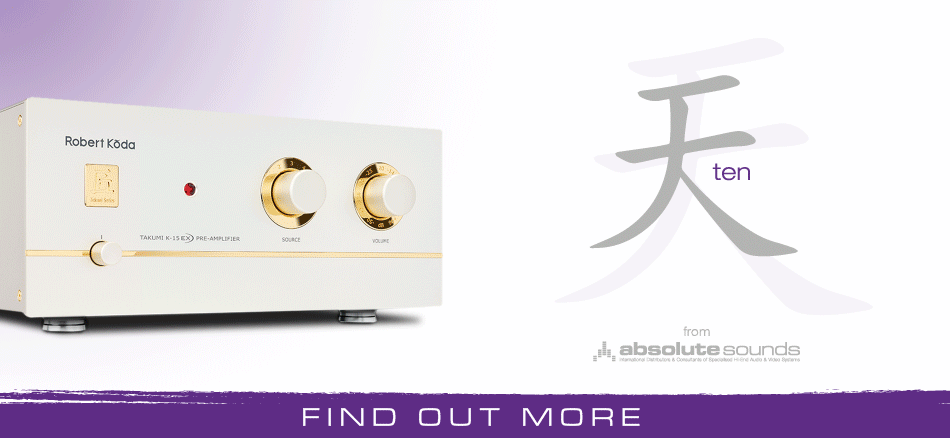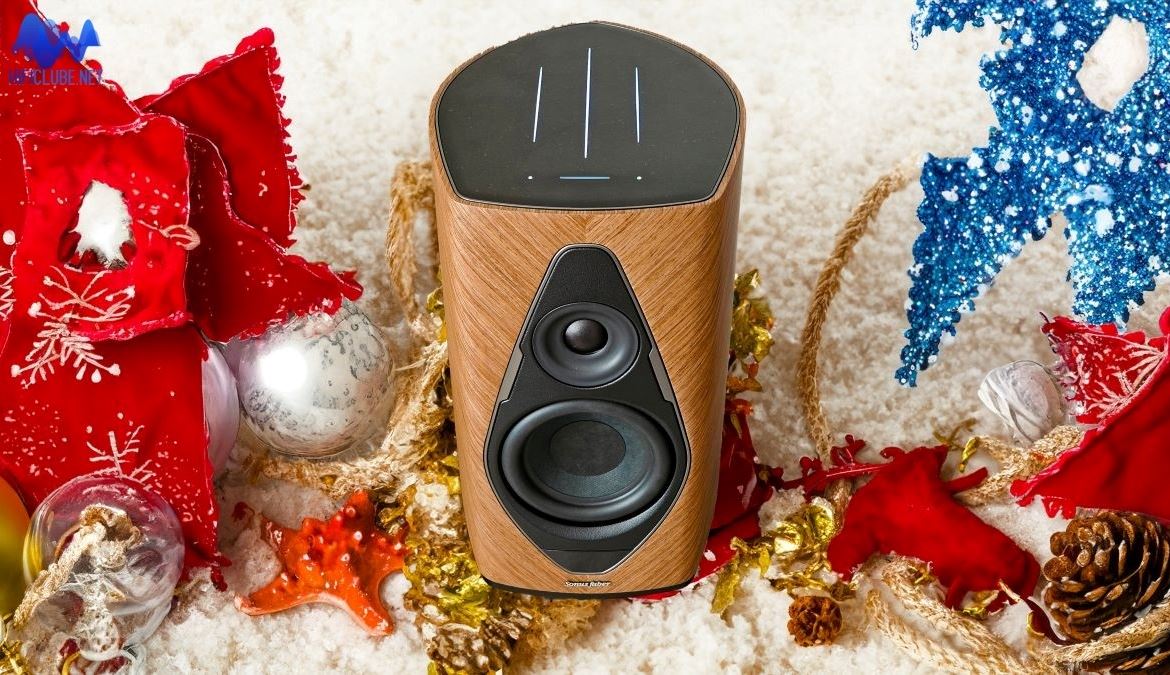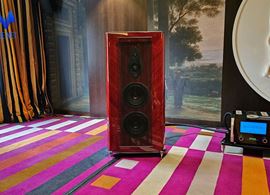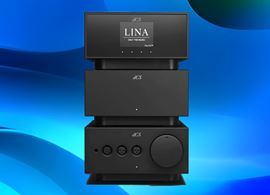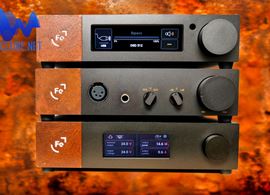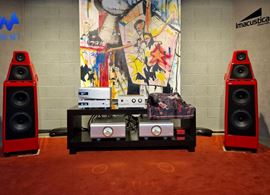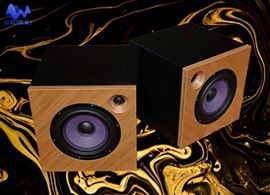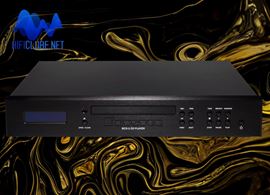Sonus faber inaugural active loudspeaker, the Duetto elevates their Omnia lifestyle concept to audiophile heights. Priced at 3,990 euros, this comprehensive system seamlessly integrates amplifiers, DACs, a streamer, and speakers into a stylish two-speaker stereo system that demands minimal wiring. With only your smartphone, immerse yourself in high-quality audio, free from the intricacies of numerous devices and cords.
My first encounter with the Duetto occurred in May, during an exclusive press presentation, under a confidentiality clause, during the Munich HighEnd 2023. Sharing the stage anonymously with the Stradivari G2 and McIntosh ML1 II, the Duetto, left a lasting impression. Subsequently, Sonus faber graciously provided a pair for review, and today, I am delighted to share my insights with you.
Design Philosophy by Livio Cucuzza
Livio Cucuzza, the chief designer at Sonus faber, emphasises that Duetto aims to introduce the brand's renowned sound to a wider audience. The infusion of modernity and versatility, including streaming capabilities, sets it apart in the Sonus faber family.
The Duetto project unveils a pair of active wireless speakers, with one serving as the Master and the other as a Satellite, connected via UWB for low-latency communication, eschewing the conventional umbilical cord used by competitors.
This is new. However, it's important to note that for UWB transmission, the speakers must have a clear line of sight to each other. Any obstruction, be it a table, sofa, fireplace, or even a person, may disrupt the signal or trigger a shutdown of the Satellite, in which case there should exist an option for wiring the two speakers.
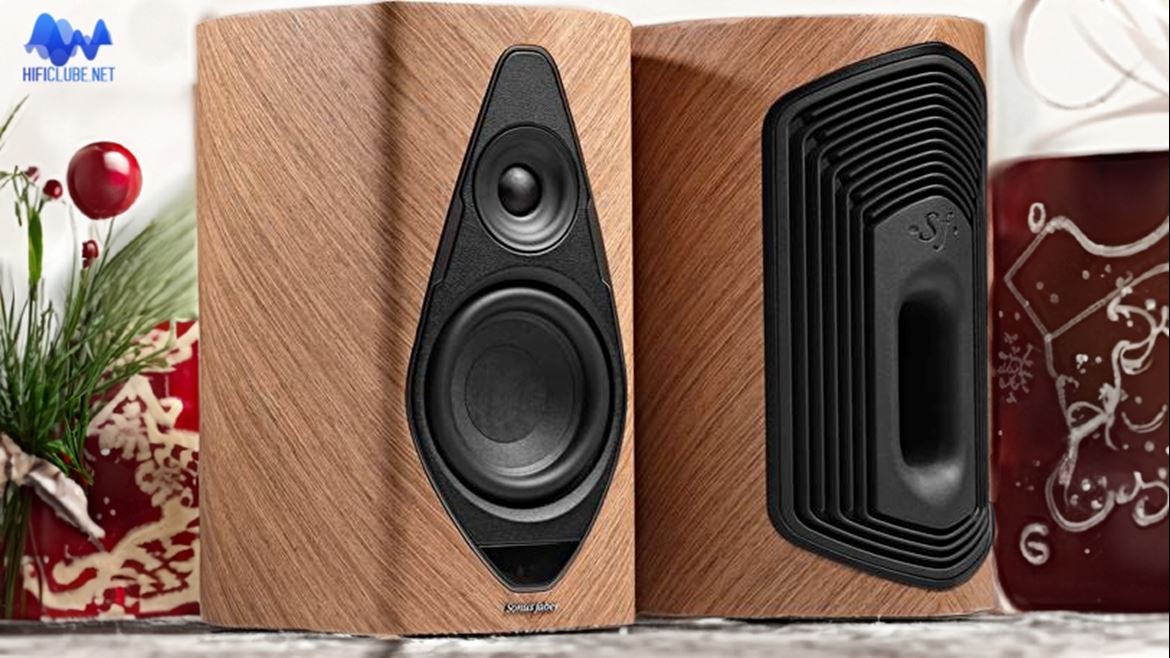
Sonus faber Duetto front and back
Authentic Sonus faber
Despite being manufactured in China like many competitors, the Duetto proudly showcases Italian design, evident in its lute-shaped cabinet revealed as you remove it from its black cotton bag. But three design elements set them apart:
- The subtly curved front panel is adorned with rounded edges and a continuous walnut finish, following the Olympica Nova Style. Leather is also sparingly used and limited to the frame housing the two drivers and the top, home to the SENSO control system adopted from the Omnia.
- The aluminium grille at the rear, serves as both the vertical reflex port (curved tube) frame, and a heatsink for the electronics housed inside, also acting as vibration control.
- Each speaker is equipped with a 100-watt Class A/B amplifier for the 25 mm silk dome tweeter with a waveguide for enhanced off-axis response. Additionally, there's a 250-watt Class D amplifier driving the 133 mm paper cone mid-woofer driver with neodymium magnets housed in an 'organic' basket to eliminate resonances. And it includes independent AKM DACs for the bass and ESS Sabre for the treble, along with the necessary streaming circuitry.
To wire or not to wire
If your mobile phone serves as the main interface for Tidal Connect and Spotify Connect, or your PC handles Roon (Certified), you'll only need power cables once the Duetto is connected to your home network via Ethernet or WiFi. It also supports AirPlay 2, Chromecast, and Bluetooth AptX HD.
As I scribe this review, I'm listening to Coldplay on Tidal (24bit/96kHz Flac) via Bluetooth, and the sound quality is most satisfactory, though it sounds even better with Roon via Ethernet.
While wireless options abound, cables are still necessary for connecting analogue and digital sources (only one RCA line input, switchable to phono) or digital sources: Ethernet, HDMI (ARC for TV connection), and optical (digital transport). I linked my Oppo universal player directly to the Line input (only RCA) and played an old favourite of mine, a rare DVD-Audio: Livingston Taylor’s ‘Ink’ (Chesky 96/24 Super Audio Disc). Despite the alleged re-digitization by the Duetto, the sound remains excellent.
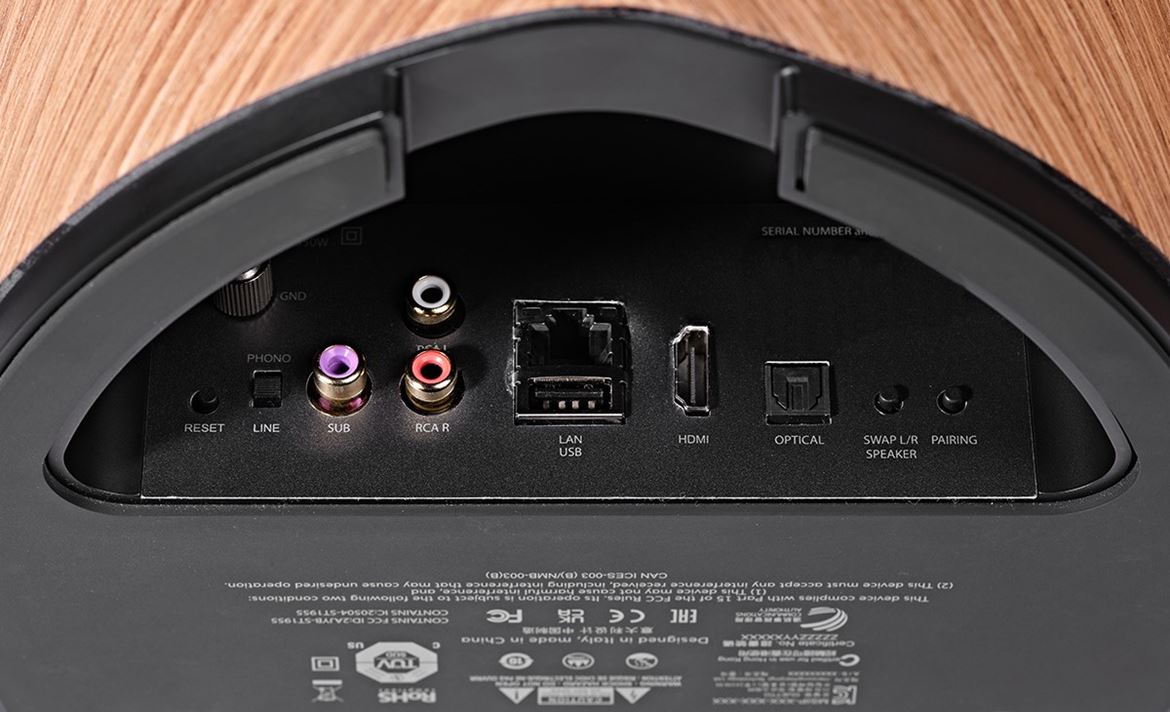
The cave where all cables hide.
Hiding the cables
The cables are neatly hidden in a cavity at the back of the speaker base, and then run down the interior of the dedicated stands (I used Sf wooden stands). This design, though visually appealing, may pose challenges during initial setup, as connecting cables and accessing the concealed ‘Reset’ (for factory default) and ‘Pairing’ controls (to pair the Master speaker with the Satellite) can be a bit of a hassle. Fortunately, this is a one-time task. Subsequently, you can utilize the SENSO system and the remote control, relegating the system app to only occasional use (see System Control App below).
Below the Master Ethernet input lies dormant a USB input, also present on the Satellite, reserved solely for factory management. Unfortunately, they don’t support playing files directly from a flash drive, which could have enhanced the Duetto’s versatility. For accessing hard drives, a computer connected to your network is still necessary.
While the option exists to connect the Master speaker to an external subwoofer, I find it unnecessary (given its already impressive bass) unless for AV applications via HDMI ARC on TVs that allow it, potentially replacing the TV's usually poor internal audio system. I didn't explore this possibility, though.
Duetto is a two-speaker Omnia, hence it sounds even better.
SENSO and sensibility
Duetto is a two-speaker Omnia - hence, it sounds even better. The inherited touch-sensitive SENSO system, though innovative, may still require some acclimation and occasionally exhibit some unresponsiveness. It manages volume, on/off (standby), or play/pause actions, depending on how long your finger presses over the smaller, colour-coded central bar. Slide your finger slowly to the right or left to change the source selection and its LED colour: HDMI (orange), Line/Phono (magenta), and Optical (fuchsia). However, you can always use the remote control instead.
But, in the end, navigating through streaming inputs is mostly done via your smartphone anyway: Spotify Connect (green), Tidal Connect (light blue/turquoise), Chromecast (yellow), AirPlay2 (white), Qualcomm AptX HD, and Bluetooth AptX HD (blue). You can even communicate by voice with Duetto, as it supports Siri and Google Assistant. Your family can easily pair their phones with Duetto using Bluetooth and command it by voice to play music from Spotify or YouTube, with the music pausing for phone calls. Nice.
Roon Ready
The Duetto is also Roon Ready (purple), ensuring compatibility with various file formats, including MQA (up to 96kHz) and DSD, with Roon performing all the data conversion to PCM. The Roon application subscription is expensive, so you can try a free app like mConnectLite (Chromecast) to play music from any music service or even a NAS. It works perfectly, albeit with resolution limitations.
These are the compatible formats:
- WAV, FLAC, and AIFF up to 32-bit/192kHz
- ALAC (Apple Lossless) up to 32-bit/192kHz
- MP3 - up to 48kHz, 320kbit (16-bit)
- AAC - up to 48kHz, 320kbit (16-bit)
- OGG and WMA - up to 48kHz (16-bit)
- Bluetooth - SBC, AAC, and aptX, Aptx HD
Note: The maximum transmission resolution between the speakers via UWB is 96kHz, which makes the 32-bit/192kHz redundant.
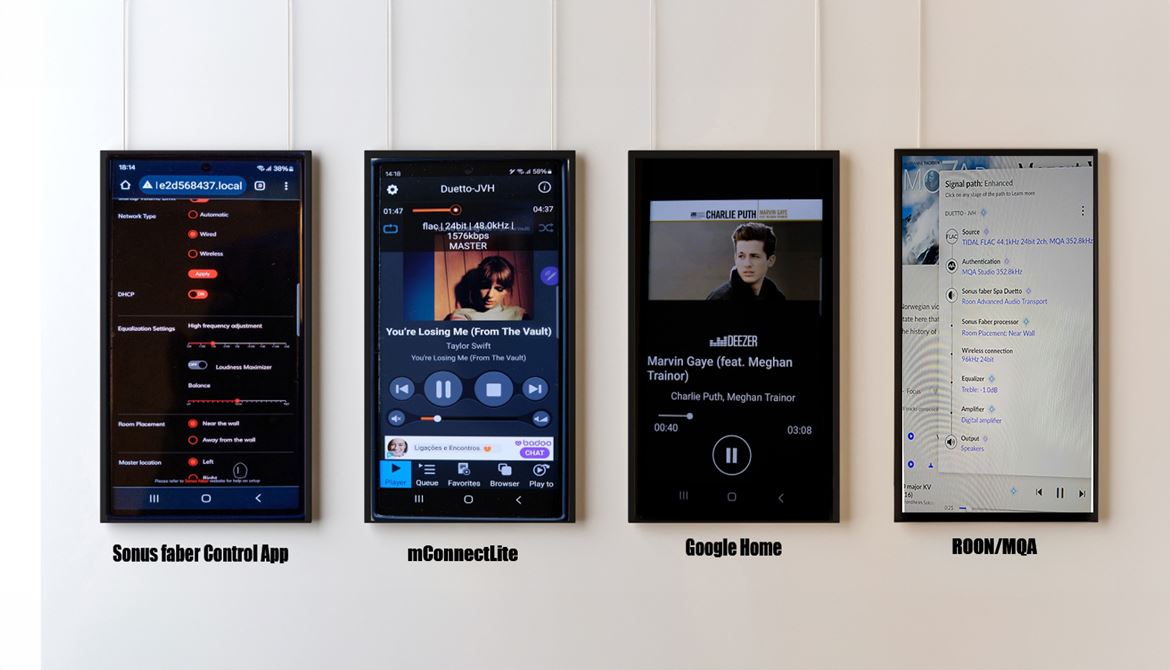
All the apps you can use.
System Control App and Adjustments
Duetto provides a system setting app, accessible via the QR code embedded in the back cover of the manual, for adjusting treble, channel balance, and wall positioning-related bass equalisation. The Master channel position is also configurable—left or right.
I tempered the treble by -1dB, disabled the 'Loudness Maximiser', and enabled the 'Near-the-Wall' setting, despite the speakers being 1 metre away from the wall. This particular adjustment is useful in curbing excess bass, particularly with certain electronic music genres.
Note: The manual (quick start guide) included with the Duetto is of limited utility. Opt for the online manual instead, accessible here.
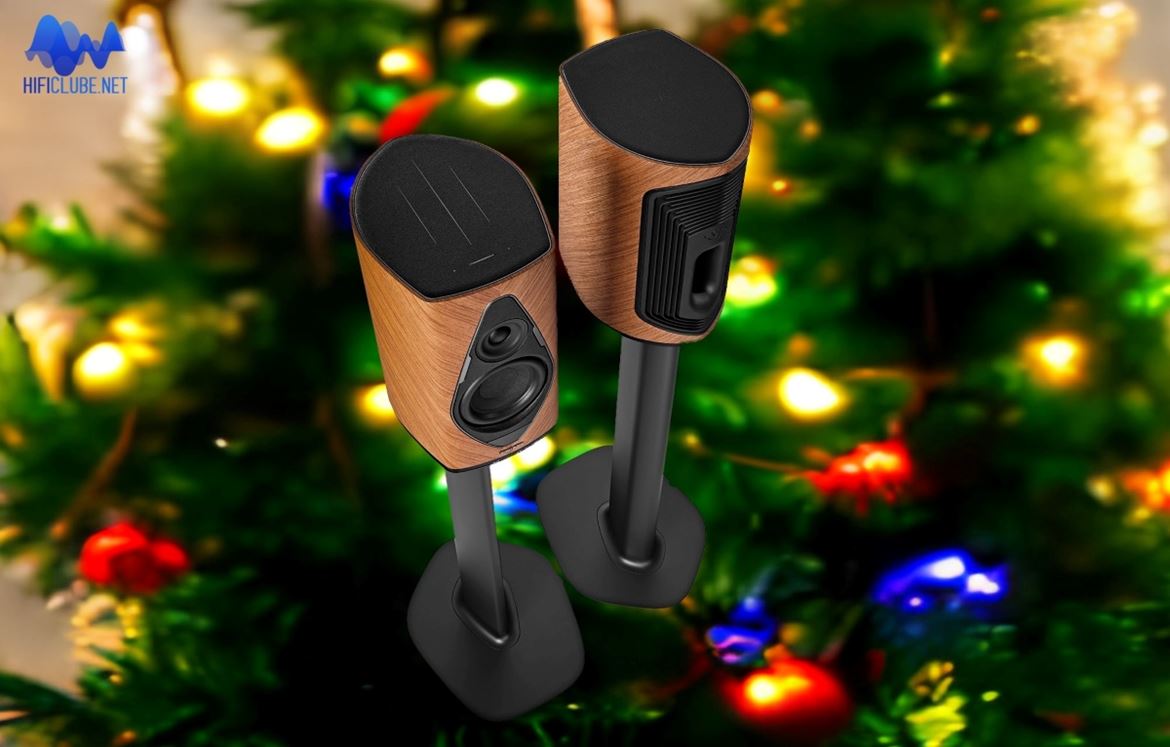
Sonus faber Duetto - a delightful Christmas gift.
Sound quality and versatility
My evaluation involved all the Duetto variants, with the primary testing using the Samsung Galaxy S23 Ultra via Tidal Connect, Bluetooth, and Google Home. And, of course, with my PC and Roon. Additional assessments involved the Rose RS520 streaming and preamp stage, alongside the new iFI iCAN Phantom preamp stage, which I found yielded the most satisfying results.
The Sonus faber Duetto gradually revealed its characteristic sound after a brief adjustment period during testing—a sound renowned for its clarity, transparency, and dynamic bass. The extended throw of the mid-woofer driver stabilized, resulting in a more integrated sound with fine tonal balance.
Duetto’s bass exudes both tension and extension, rendering a subwoofer unnecessary given the tonal synergy between the two drivers. The individual amplifiers and DACs for each speaker contribute to precise sound control and articulate attack. As mentioned earlier, a subtle adjustment of reducing the treble by -1dB using the Duetto equaliser notably enhanced the overall sound quality. After a week of use, the sound profile reached an optimal state.
Cultural background
For those seeking sonic enlightenment, the Duetto delivers a rich experience across diverse musical genres. Exploring the ethereal choirs of Voces8 in 'May It Be,' Mozart's Violin Concerto No. 4, or Igor Stravinsky's 'The Rite of Spring’s Birth of Apollo,' by the Trondheim Solistene's, among other compositions, is highly recommended. Even Bob Dylan's 'Blowin' in the Wind' finds a new dimension through the Duetto.
Although made in China, Duetto’s cultural blend, from the Po River shore in Vicenza to development within Venetian culture, adds to the audio quality the unique dimension of a tuned musical instrument.
I love the sound of Duetto’s voice and the convenience and bliss it brings to my daily life.
Conclusion: a masterful blend
Sonus faber Duetto masterfully blends convenience with excellence. And seamlessly integrates into daily life, offering a musical experience that transcends its minor drawbacks.
While the UWB transmission system can be sensitive to physical obstructions and the SENSO system may exhibit occasional unresponsiveness, these nuances are outweighed by the product's overall versatility and aesthetic appeal, that make it a standout choice.
Admittedly, the Duetto also commands a higher price compared to some of its competitors. Nevertheless, it stands as a testament to Sonus faber's commitment to delivering beautiful and versatile audio products. I love the sound of Duetto’s voice and the convenience and bliss it brings to my daily life.
Note: The information provided in this review is based on personal experiences and insights, and prospective buyers are encouraged to explore further, consult local distributors, and listen for themselves to make informed decisions.
Sonus faber Duetto official video
Factory specifications
- SYSTEM
- 2-way curved-vented box.
- SPEAKERS
- Tw: 1.1” Ferrite Magnet system with copper cap, Silk dome and dedicated Waveguide
Mw: 5.25” Neodymium Magnet system with copper cap and Aluminium ring, Long excursion design - CROSSOVER
- 1900Hz –Designed with Sf know-how
- FREQUENCY RESPONSE
- 37 Hz –30.000 Hz
- MAX SPL
- 105dBSPL @1m
- ON BOARD AMPLIFIERSTw: 100W Class AB
Mw: 250W Class D - DAC
- SABRE, AKM
- NETWORK CONNECTIVITY
- RCA Line/Phono IN
Optical
HDMI ARC/EARC
SUB Output - DIMENSIONS (HXWXD)
- 342x210x272 mm / 13,4x8,3x10,7 in
1082x298x371 mm / 42,6x11,7x14,6 in (stand included) - WEIGHT
- 6,8 kg ea / 15,0 lb ea
7,8 kg ea / 17,2 lb ea (stand weight) - PRICE
- 3990 €
For more information, contact IMACUSTICA, or your local dealer.

